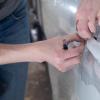Must Have Items for Your Car's Emergency Kit
Car accidents and mechanical breakdowns can leave people stranded on the road in dangerous conditions without a way to get help. A well-equipped car emergency kit can make all the difference in keeping passengers safe until help arrives or getting back on the road safely.
From manageable problems like flat tires and dead batteries to serious ones such as car wrecks and deadly truck crashes, car emergencies happen at the most inopportune time. These items in a car emergency kit can help prevent crashes and may save the lives of accident victims.
Car Jack and Spare Tires
Countless drivers have experienced the woes of a flat tire. This common roadside emergency can easily and quickly be fixed by changing the affected tire using a jack. Most cars will come with a jack and spare tire and these are usually stored in the car trunk or under the rear of the vehicle. However, drivers should check to confirm that they have these roadside emergency essentials.
Additionally, it is important to check the condition of spare tires on a regular basis. Should one be in need of a new jack, he must purchase one that will support the weight of their vehicle. It might also be necessary to get an air compressor or tire inflator and tire sealants as back-up tools for fixing flat tires.
First-Aid Kit
A first-aid kit is a vital part of a car emergency kit. In the event of an accident, the first-aid kit can help drivers conduct roadside treatment as they wait for paramedics. The first-aid kit should contain the following items:
- Band-aids in different sizes
- Sterile gauze in different sizes
- Antiseptic spray
- Antibiotic ointment
- Wire scissors
- Pain relief medication
- Ice pack
- Sterilized disposable gloves
- Adhesive tape
- Blood stopper compress
- Burn relief spray
- Multi-purpose splint
- Tweezers
- Eyewash
- Alcohol pads
- Thermometer
- First-aid handbook
Jumper Cables
Many drivers have been victims of drained battery and electrical faults. A vehicle that has been rendered immobile because of a dead battery can be resuscitated using jumper or booster cables. Ideally, jumper cables should be at least 20 feet long to connect to other vehicles. They should also be well insulated to provide protection from power surges. To be on the safe side, it is better to purchase a set of protective gloves together with heavy-duty professional jumper cables.
Portable Car Battery Charger
While jumper cables can help bring back to life a dead battery, they are only useful if another vehicle is available. This is where portable car battery chargers come in handy. Whether one is stranded in a deserted highway or a dark alley without access to cellular services, these chargers can prevent unnecessary delays by powering the car.
Multipurpose Utility Tool
A multipurpose utility tool can save a driver during accidents. Many of these tools come with sharp knives, pliers, wire cutters, scissors, and electrical crimper as well as wood and metal files. These can come in handy during accidents as they can help drivers get out of entanglements and barriers such as seatbelts, airbags, windshields, and stuck doors amongst other things. If a multipurpose utility tool is too expensive, a simple pocket knife is highly recommended. Either of these tools should be stored in easily accessible compartments in the car.
Reflective Triangles
In the event of an accident or vehicle breakdown, alerting other motorists can help prevent injury accidents. Reflective triangles placed 200m before the site of the accident can caution other drivers to approach the emergency scene with care. When buying reflective triangles, a savvy driver will get a strong case for storing the pair.
The above list of must-have items in car emergency kits is not exhaustive. Drivers should use their discretion and pack other emergency equipment that can help them during unforeseen circumstances.
More to Read:
Previous Posts:



